Ikebana is a Japanese flower arranging technique. It is sometimes referred to as kadō. Floral offerings were offered at altars during the Heian period, and this practice extends back to that time. Flower arrangements were later utilized to decorate a traditional Japanese home’s tokonoma.
Continue reading to discover more about Ikebana, including why it is regarded as a delicate Japanese flower arranging art, the materials and concepts utilized, as well as how to do it yourself.
What Exactly is Ikebana?
Ikebana is a traditional Japanese flower arrangement technique. When Buddhism was initially introduced to Japan from China and Korea in the seventh century, the tradition of utilizing flowers as offerings in temples began.
Still, the codified version of Ikebana didn’t start until the Muromachi era, during the 15th or 16th century. Since then, these arrangements have become more secular, and they are now displayed as works of art in people’s homes.
On the other hand, Ikebana is seen as more than simply a decorative art. Ikebana is a spiritual practice that aids in developing a deep relationship with nature, integrating the inside and outside.
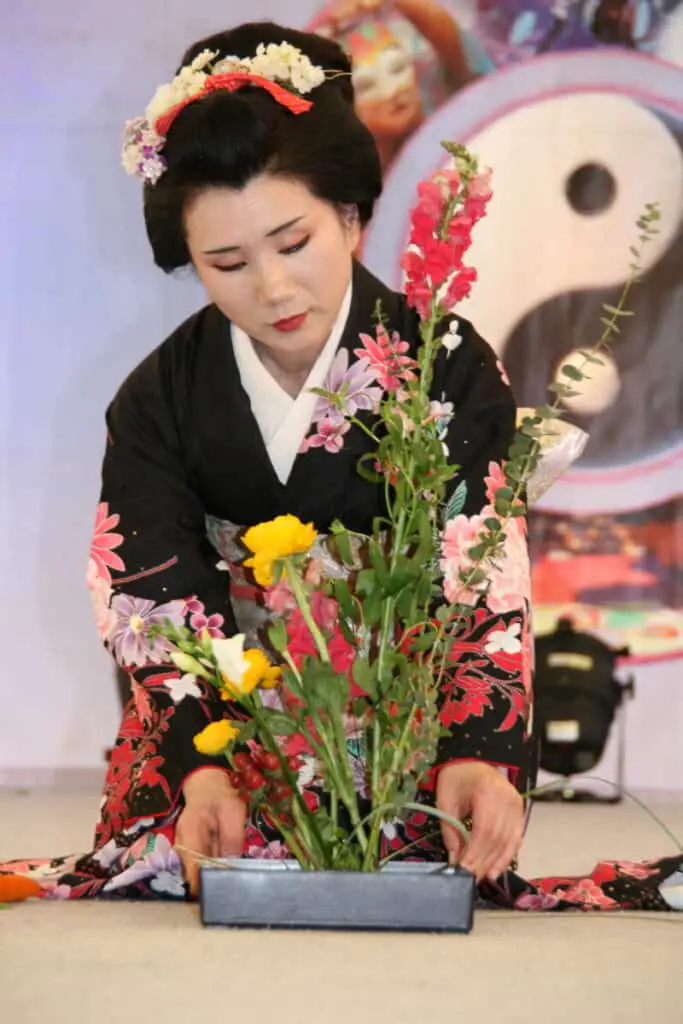
What Does an Ikebana Arrangement Look Like?
Ikebana arrangements are similar to sculpture in appearance. Color, line, shape, and function all play a role in the creation of a piece. The resulting forms are unique and surprising. They can range in size and composition from a single flower to a sculpture containing several distinct flowers, branches, and other natural items.
Since most natural flowers, plants, and trees in Japanese culture have symbolic importance and are connected with specific seasons, both symbolism and seasonality have traditionally been stressed in making ikebana arrangements.
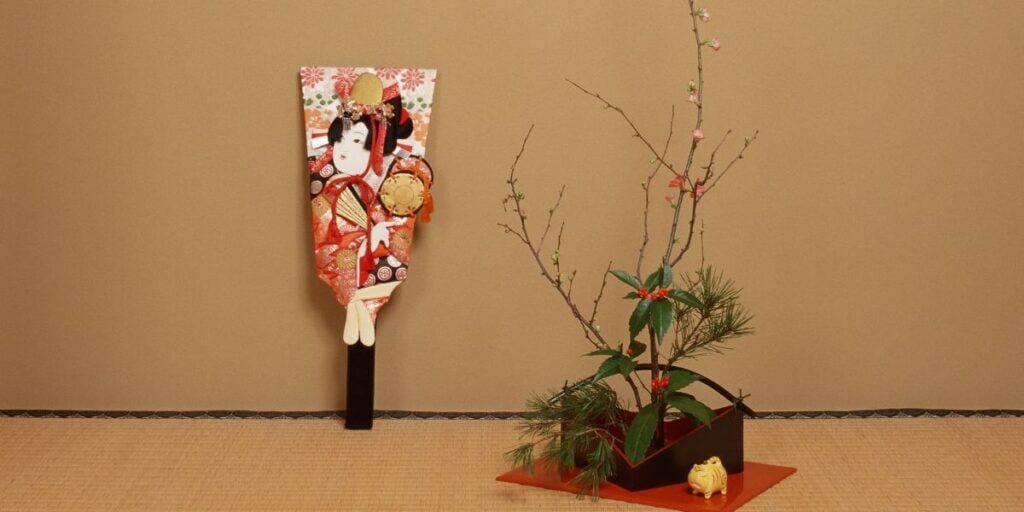
For example, bamboo grass is used all year, whereas pine and Japanese plum branches are only used during New Year’s, and the chrysanthemum is used in the autumn.
The same awareness of seasons and the surroundings in which an arrangement is constructed is required in modern ikebana techniques.
The Origins of Ikebana
Ikebana has its origins in Japan’s Buddhist tradition of the 6th century. Because the phrases Ikenobo and Ikebana are used interchangeably in ikebana talks, beginners to the art may believe they are interchangeable.
The word Ikenobo is a Japanese word that means “lakeshore.” A Kyoto monk who lived on a lakeside became so well-known for the ikebana patterns that he became a tutor to anybody interested in learning how to do it.
The Ikenobo school of Ikebana was founded in 1545, and it created the basics of rikka ikebana design, which is being used today.
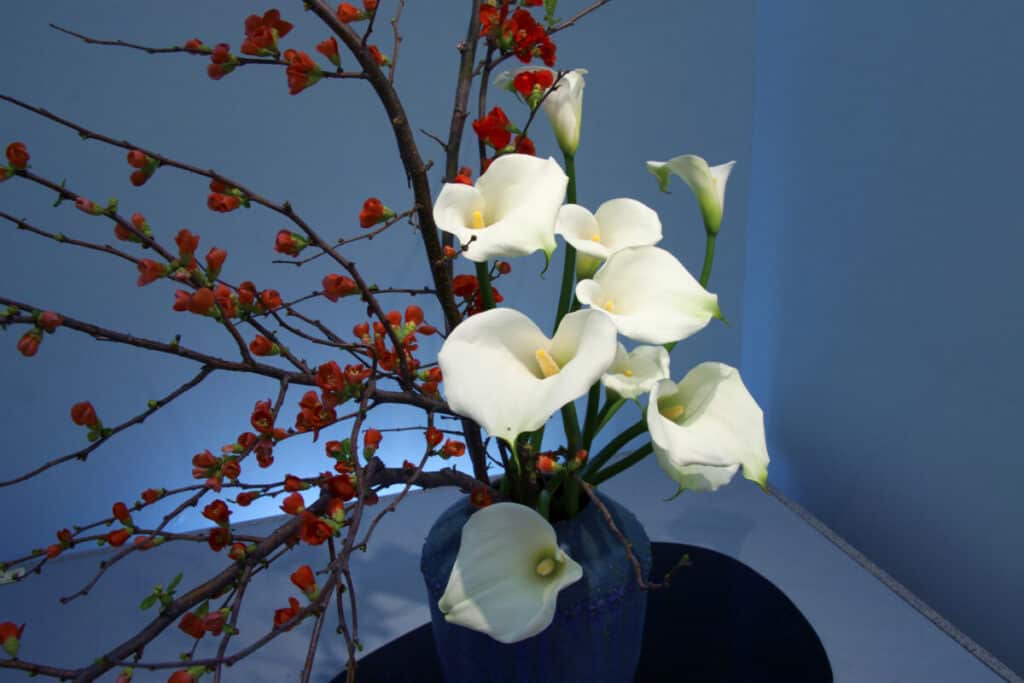
What are the Principles of Ikebana?
Ikebana has gained a reputation for being a calming art form. The designer should create an arrangement in solitude to view and concentrate on the beauty of nature and find inner serenity.
Experienced designers understand the value of stillness and space, which is designed to be produced and kept rather than filled. This connects to other Ikebana concepts such as minimalism, shape and line, form, humanism, aesthetics, and balance.
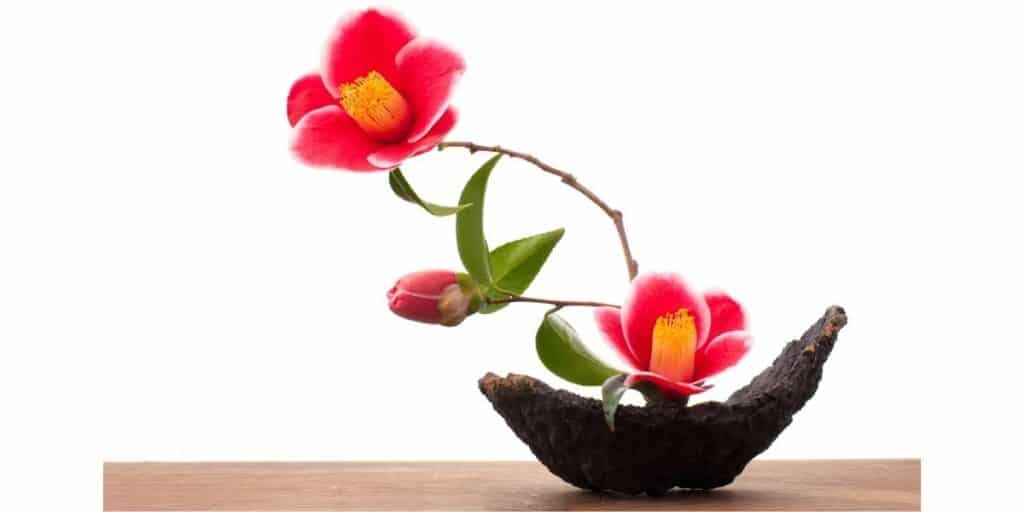
Are There Different Ikebana Schools?
Ikebana is taught in approximately 3000 schools throughout the world. Ikenobo is the earliest known school. Ikenobo started in Kyoto’s Rokkaku-do temple, where the Ikenobo family had long served as head priests.
Rikka was the family’s earliest style. It was an outgrowth of early Buddhist floral decorating in which flowers were employed to represent the notion of the cosmos rather than for their aesthetic value.
Ikebana grew and developed over the following several hundred years, becoming a Buddhist mainstay and a cornerstone of Japanese society as a whole. When Western culture was introduced to Japan in the late 1800s, this became even more visible.
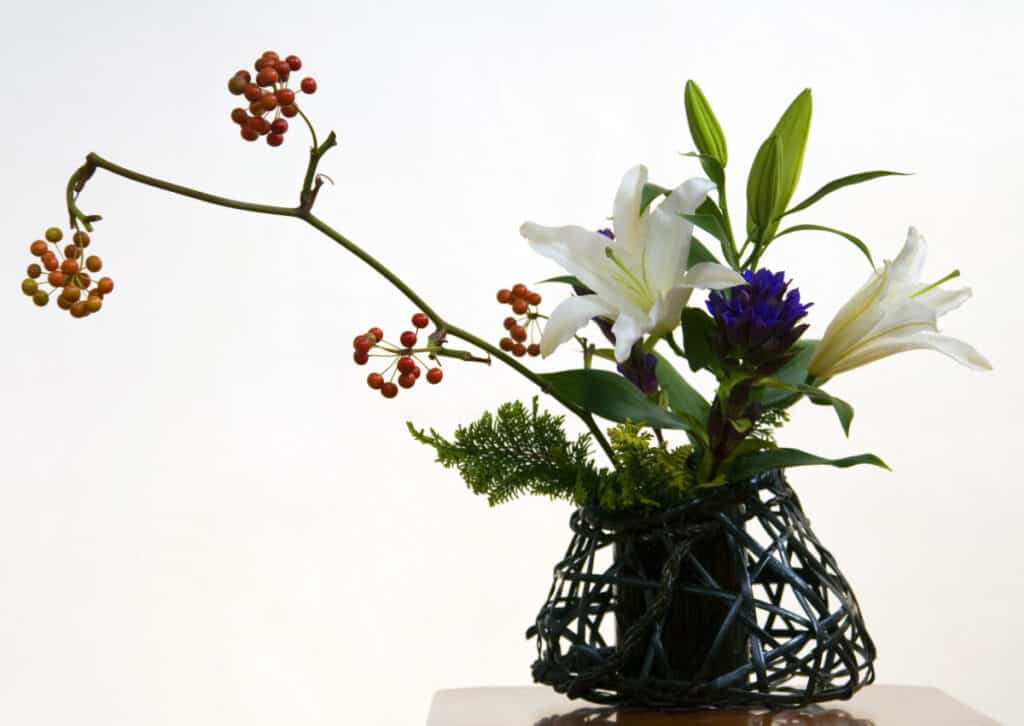
Western Influence on Ikebana
Western blossoms were appreciated by several flower experts, who integrated them into their arrangements. Unshin Ohara founded the Ohara School and quickly developed the Moribana style.
This style quickly rose to prominence as one of the most popular. There are three basic Moribana styles: upright, slanting, and water-reflecting, each with several variants.
Beginners generally start by learning the upright floral position.
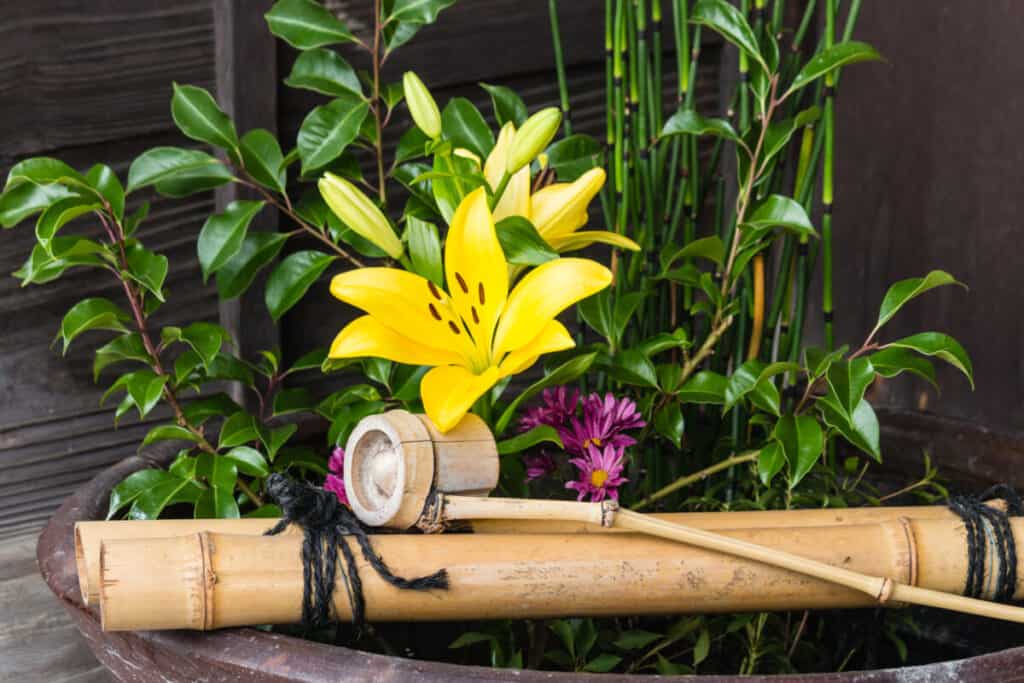
What are the Most Common Styles of Ikebana?
The majority of ikebana designs fit into one of three design types. Moribana is commonly grown in a flat pot with kenzan and contains many flowers.
Nageire has three plant clusters that create a loose triangle. Rikka is generally shown in a tall vase arranged upright or vertically.
Freestyle ikebana refers to ikebana arrangements that don’t follow any particular guidelines.
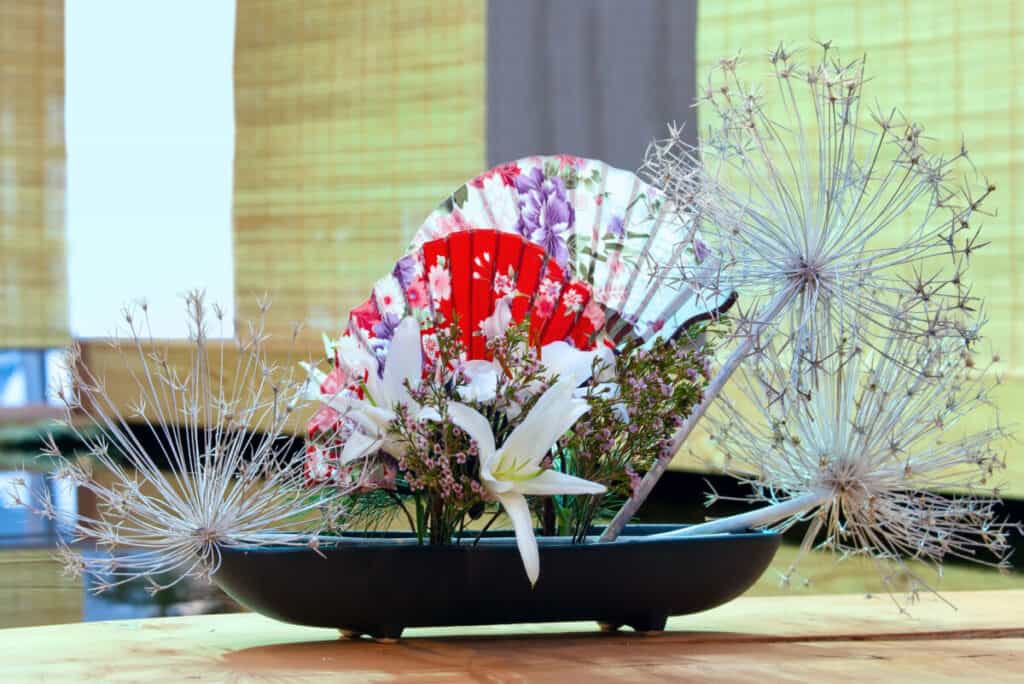
Rikka Ikebana
One of the first styles to emerge was Rikka, or standing flowers, which was created as a Buddhist interpretation of nature. The use of seven or nine branches, which are considered to depict nature, is one characteristic that distinguishes this design from others.
Moribana Ikebana
Moribana, which translates to “piled-up flowers,” is a late-nineteenth-century style popularised by the Ohara school.
Moribana arrangements are made with shallow, bowl-like containers that allow the artist to create a pattern that flows outwards instead of other ikebana forms, typically organized vertically.
There are three different sorts of moribana styles. The upright design is the one most commonly seen. While popular, slanting and water-reflecting forms aren’t as widespread as upright.
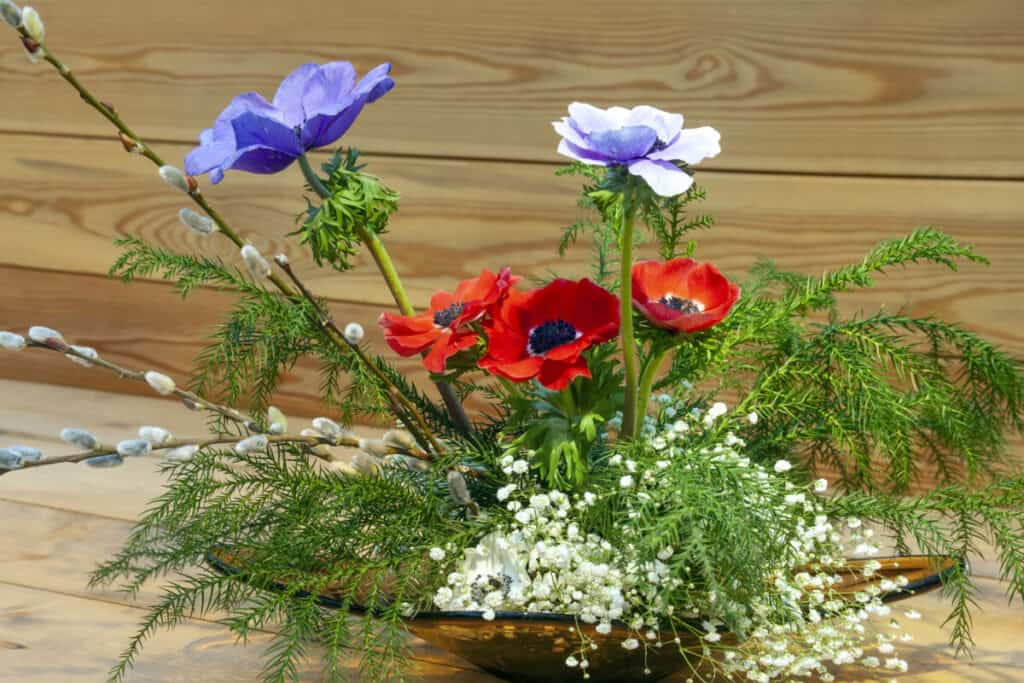
Nageire Ikebana
The first distinction between nageire and moribana ikebana is that the moribana is usually low-lying and flat. On the other hand, the nageire is tall and placed in a vase rather than a bowl.
Unlike moribana, nageire arrangements are arranged in vases and secured in place using a variety of ways rather than pins.
However, nageire arrangements, like moribana, may be found in three different styles known as upright, cascading, and slanting.
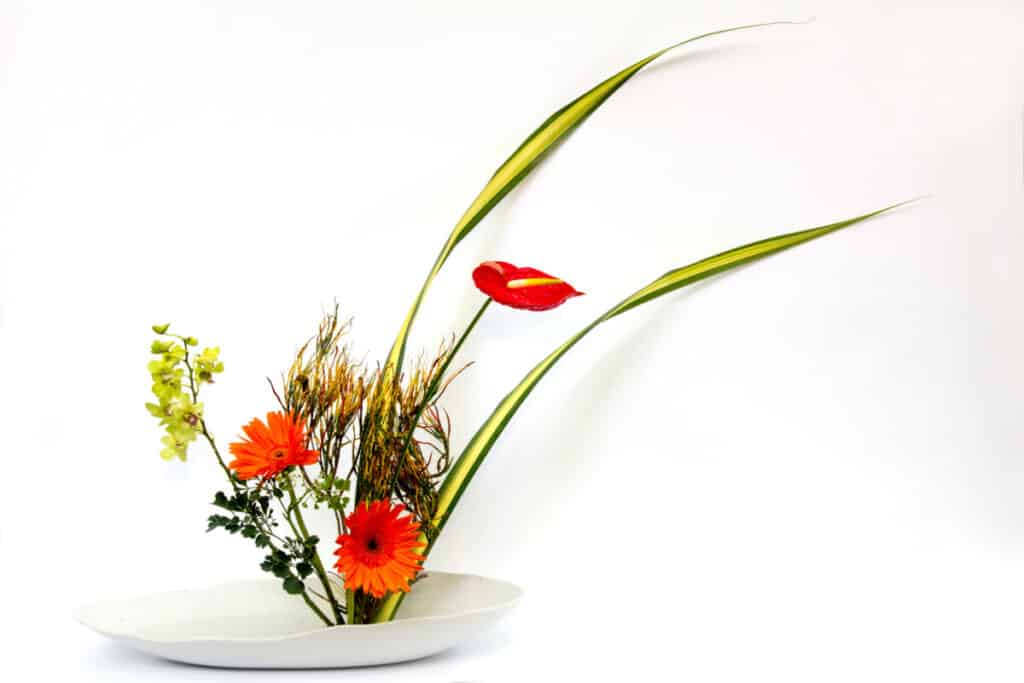
What Flowers ; Plants Does One Need to Create Ikebana Arrangements?
Many flowers and plants of native Asian origin are treasured in Ikebana design. Some of these flowers are associated with Japanese holidays, like the iris, which is employed in ikebana arrangements for the May 5th Boys’ Festival.
Whereas the chrysanthemum naturally predominates during the September 9th Chrysanthemum Festival.
Camellia, tree peony and narcissus are among the other flowers used in Ikebana patterns. Leafy greens and stems provide a relaxing foil for the exuberance of flowers.
Expect to see leaves, bamboo grass, willow, pine branches, and other foliar components in the arrangements.
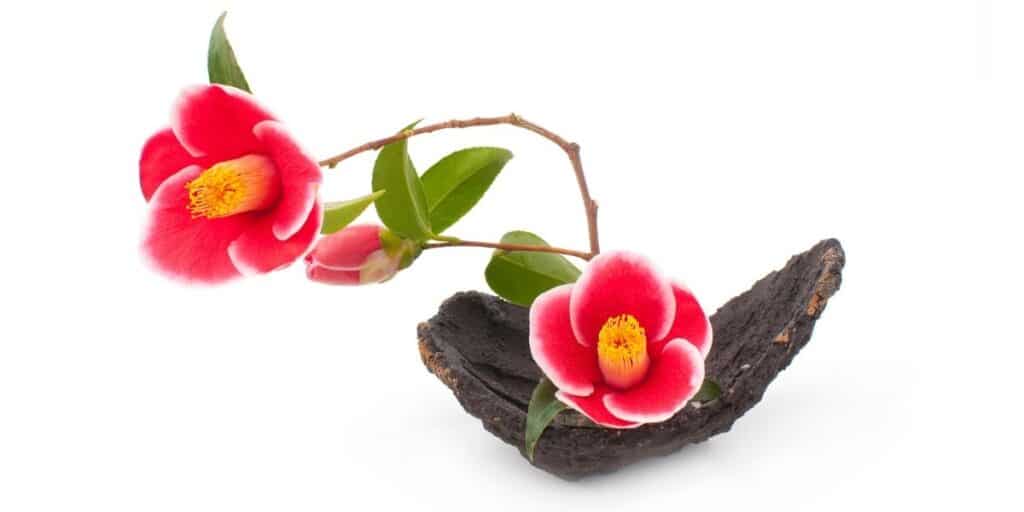
What are the Specific Material Lengths When Creating Ikebana?
The blossoms and branches which measure to the shin, soe, and tai are all measured in relation to the utsuwa.
Measure the height and breadth of your vase and combine these dimensions to calculate the correct lengths of these pieces.
Shin should not exceed three times this amount. Two-thirds of the shin is soe, and two-thirds of soe is tai. If shin and soe are branches, the beautiful blossoms that accompany them, known as jushi, will be half the length of the shin, soe, and tai.
When selecting how long to cut your branches and flowers, keep in mind the depth of the vase and the angle placement.
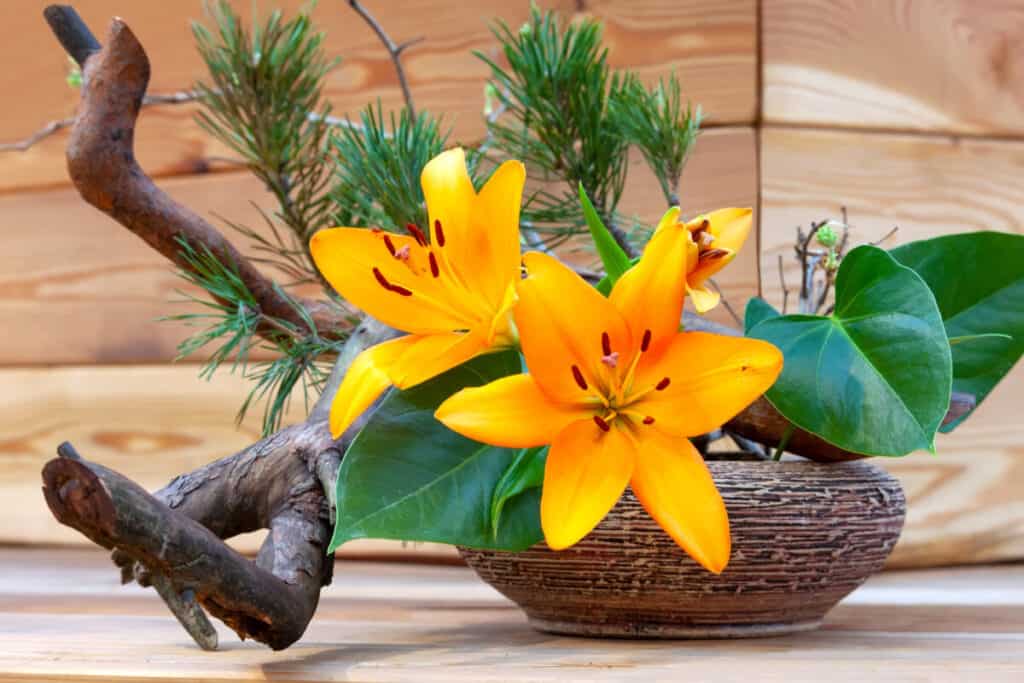
How To Create a Simple Japanese Ikebana Arrangement?
To make a simple Moribana arrangement, the ikabanaist fills a shallow container with water and then sets a little, pin-covered item that holds flowers in place within it. These pins called kenzan, or floral frogs, must be used with these pots to allow flowers and stems to be positioned in upright and angled positions.
The creator then chooses two branches for shin and soe and a flower for hikae. The shin, or tallest branch, depicts heaven. Man is represented by the middle branch, while the shortest branch represents the ground.
The stems are then measured and cut to specific lengths before being attached, one by one, on the kenzan at various angles.
More jushi stems are added to conceal the kenzan and fill in the gaps to finish the arrangement. Additional flowers can also be used to complement these Moribana-Inspired Ikebana Arrangements.
These concepts may be used repeatedly, with the positioning and angle changed to generate various shapes and effects.
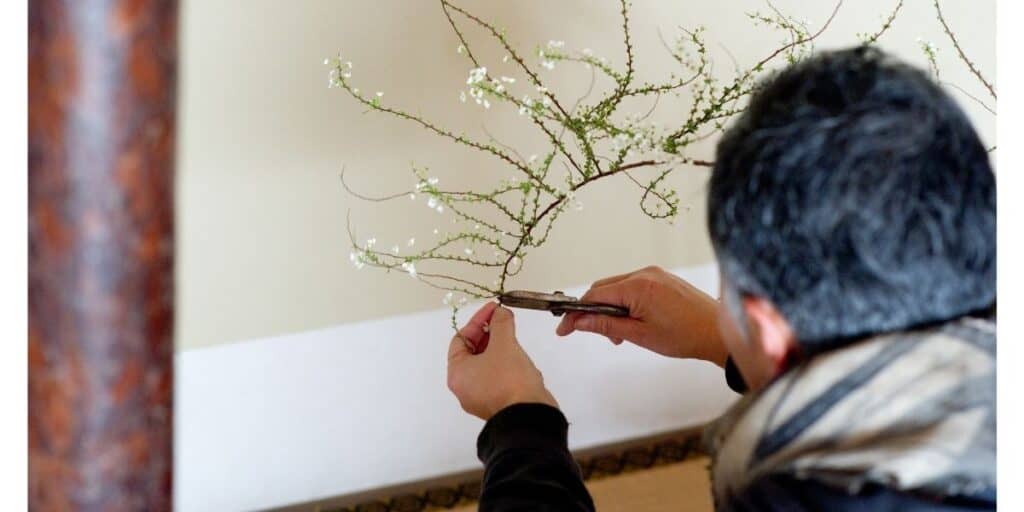
Contemporary Ikebana
Anyone who performs Ikebana today is fully aware that the practice’s primary value is connection building, which includes interactions between materials, students, instructors, and artists.
Today, the name kadō, which means “way of flowers,” is the preferred phrase for Ikebana in Japan since it better represents the essence of the craft as a lifelong learning path. Ikebanaists can never stop exploring and experimenting because of the impermanence inherent in the art, which begins with its reliance on nature’s seasons.










